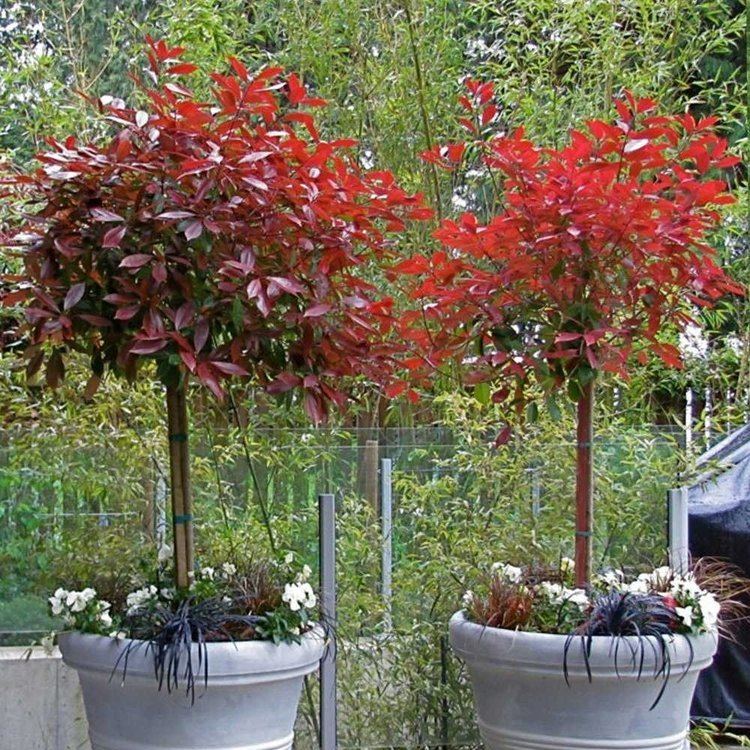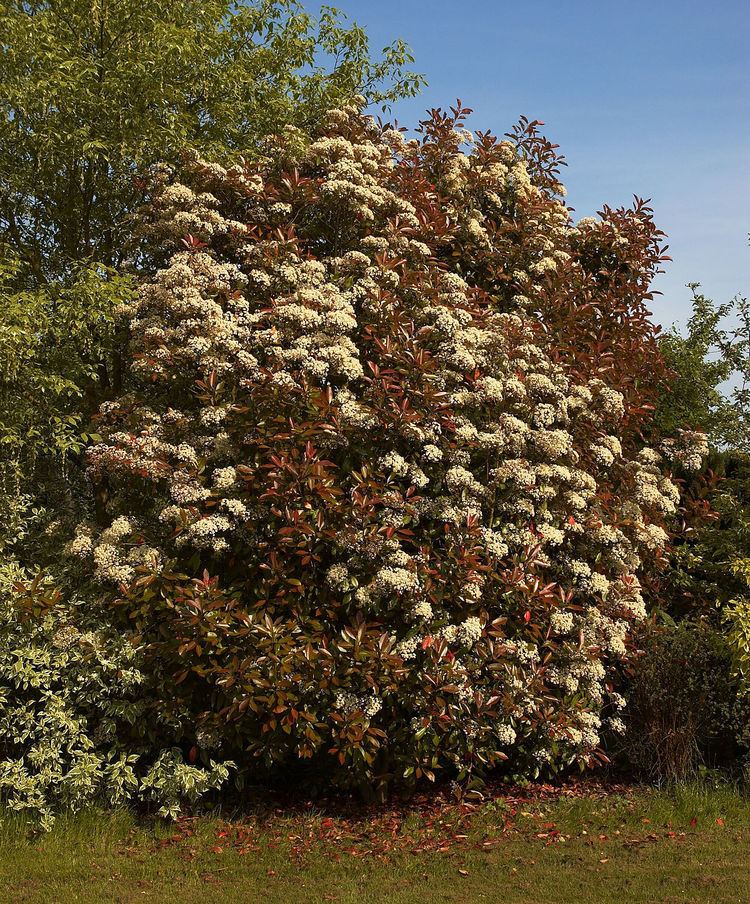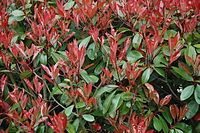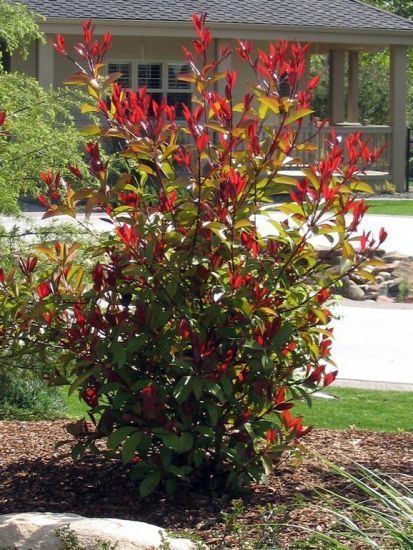Family Rosaceae Scientific name Photinia Rank Genus | ||
Lower classifications Red Tip Photinia, Photinia serratifolia, Photinia glabra, Photinia lasiogyna, Photinia lasiopetala | ||
A focus on photinia hedging all you need to know about photinia x fraseri red robin
Photinia (/foʊˈtɪniə, fə-/) is a genus of about 40–60 species of small trees and large shrubs, but the taxonomy has recently varied greatly, with the genera Heteromeles, Stranvaesia and Aronia sometimes included in Photinia.
Contents
- A focus on photinia hedging all you need to know about photinia x fraseri red robin
- Photinia red robin information and advice
- Description
- Taxonomy
- Uses
- Toxicity
- References

They are a part of the rose family (Rosaceae) and related to the apple. The botanical genus name derives from the Greek word photeinos for shiny and refers to the often glossy leaves. Most species are evergreen, but deciduous species also occur. The small apple-shaped fruit has a size of 4 to 12 mm and forms in large quantities. They ripen in the fall and often remain hanging on the bush until well into the winter. The fruits are used as food by birds, which excrete the seeds with their droppings and thereby distribute the plant.

The natural range of these species is restricted to warm temperate Asia, from the Himalaya east to Japan and south to India and Thailand. They have, however, been widely cultivated throughout the world as ornamentals for their white flowers and red fruits.

Some varieties of Photinia are toxic due to the presence of cyanogenic glycosides in the foliage and fruit.
The scientific name Photinia is also widely used as the common name. Another name sometimes used is "Christmas berry", but this name is a source of confusion, since it is commonly applied to plants in several genera including Heteromeles, Lycium, Schinus, and Ruscus. The name "photinia" also continues to be used for several species of small trees in the mountains of Mexico and Central America which had formerly been included in the genus Photinia.
Photinia red robin information and advice
Description

Photinias typically grow from 4–15 m tall, with a usually irregular crown of angular branches; the branches are often (not always) thorny. The leaves are alternate, entire or finely toothed, varying between species from 3–15 cm in length and 1.5–5 cm wide; the majority of species are evergreen but several are deciduous. The flowers are produced in early summer in dense terminal corymbs; each flower is 5–10 mm diameter, with five rounded white petals; they have a mild, hawthorn-like scent. The fruit is a small pome, 4–12 mm across, bright red and berry-like, produced large quantities, maturing in the fall and often persisting well into the winter. The fruit are consumed by birds, including thrushes, waxwings and starlings; the seeds are dispersed in their droppings. Photinia species are sometimes used as food plants by the larvae of some Lepidoptera species including common emerald, feathered thorn and setaceous Hebrew character.
Taxonomy

Some botanists also include the closely related North American species Heteromeles arbutifolia in Photinia — as Photinia arbutifolia. The genus Stranvaesia is so similar in morphology to Photinia that its species have sometimes been included within it, but recent molecular data indicate that the two genera are not related. The genus Aronia has been included in Photinia in some classifications, but recent molecular data confirm that these genera are not closely related. Other close relatives include the firethorns (Pyracantha), cotoneasters (Cotoneaster) and hawthorns (Crataegus).
A number of species have been moved to the separate genus Stranvaesia including P. amphidoxa, P. davidiana, P. nussia, and P. tomentosa.
Uses
Photinias are very popular ornamental shrubs, grown for their fruit and foliage. Numerous hybrids and cultivars are available; several of the cultivars are selected for their strikingly bright red young leaves in spring and summer. The most widely planted are:
Toxicity
Some varieties of Photinia are toxic due to the presence of cyanogenic glycosides in the vacuoles of foliage and fruit cells. When the leaves are chewed these compounds are released and are rapidly converted to hydrogen cyanide (HCN) which blocks cellular respiration. The amount of HCN produced varies considerably between taxa, and is in general greatest in young leaves. Ruminants are particularly affected by cyanogenic glycosides because the first stage of their digestive system (the rumen) provides better conditions for liberating HCN than the stomachs of monogastric vertebrates.
